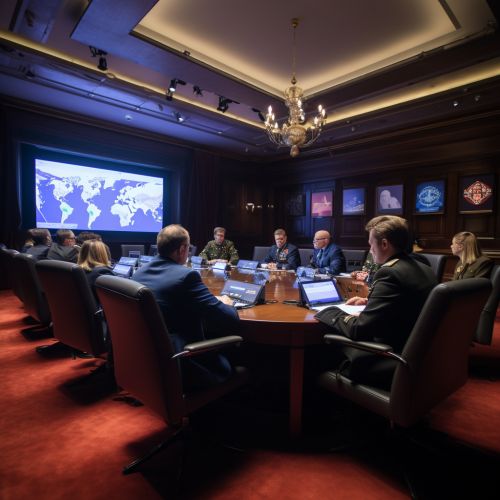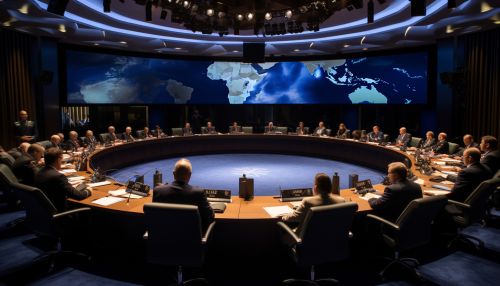North Atlantic Council
Overview
The North Atlantic Council (NAC) is the principal political decision-making body within the North Atlantic Treaty Organization (NATO), composed of Permanent Representatives from its member countries. It was established by the North Atlantic Treaty, signed in Washington, D.C. on 4 April 1949, which created NATO.


Structure and Composition
The North Atlantic Council is composed of representatives from each of the member countries of NATO. Each member country is represented by a Permanent Representative who is typically of ambassadorial rank, supported by a national delegation composed of advisers and officials. The Council also includes the NATO Secretary General, who chairs the meetings and sets the agenda.
Function and Role
The North Atlantic Council is the principal political decision-making body within NATO. It provides a forum for member countries to consult on security issues of common concern and to take decisions on political and military matters affecting the security of the Atlantic area. The Council meets at least once a week and more often when necessary.
Decision Making Process
Decisions within the North Atlantic Council are made on the basis of unanimity and common accord. There is no voting or decision by majority. This means that decisions are only valid if they are supported by all member countries, which underscores the sovereign equality of all NATO members.
History
The North Atlantic Council was established by the North Atlantic Treaty, which was signed in Washington, D.C. on 4 April 1949. The Treaty established NATO as a system of collective defense, whereby its member states agree to mutual defense in response to an attack by any external party.
